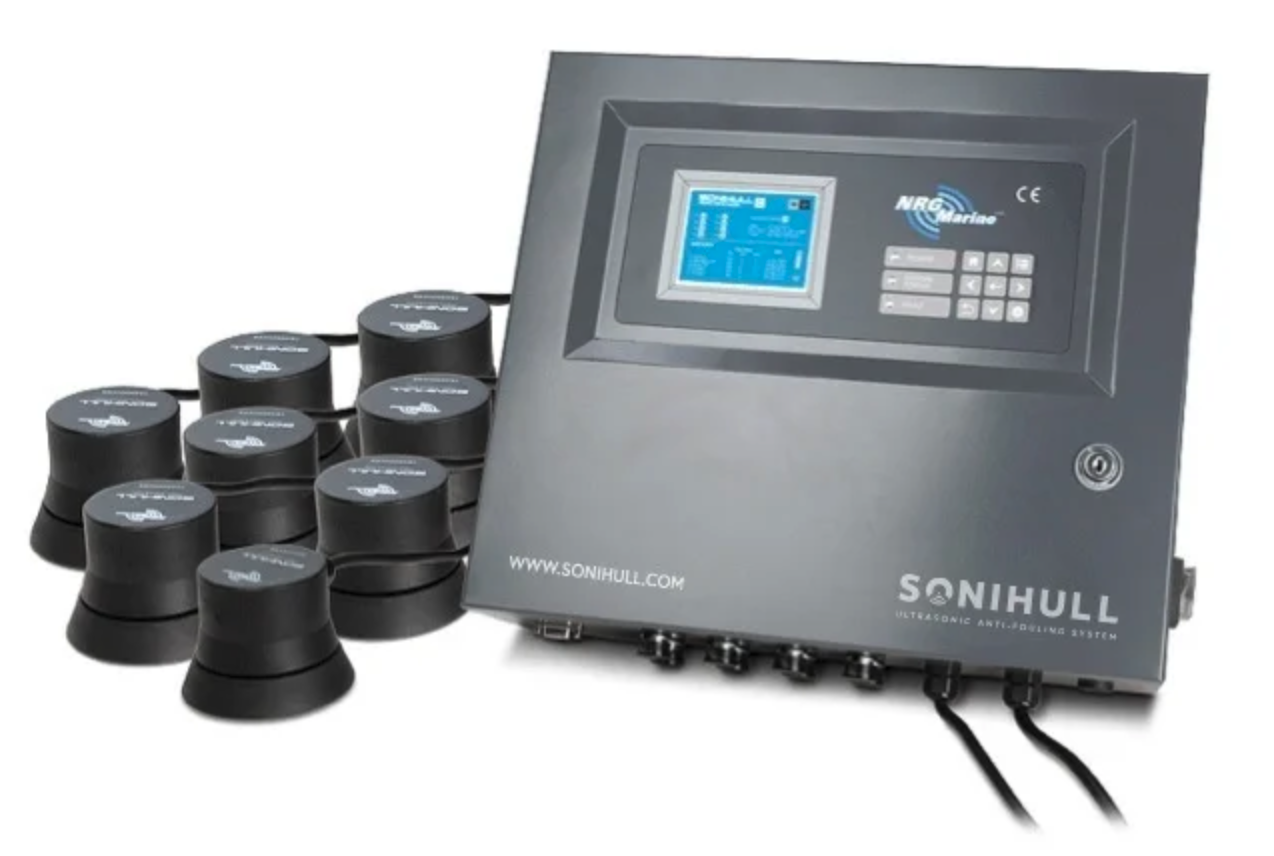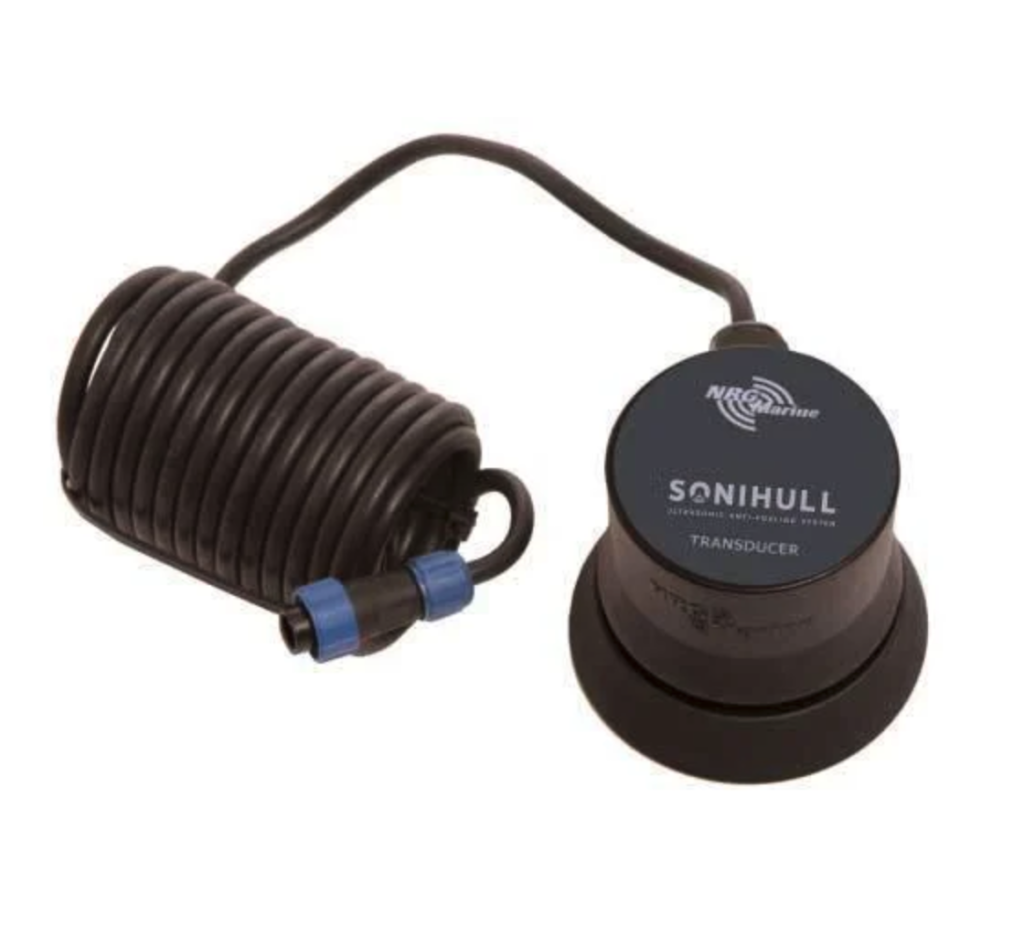Sonihull Ultrasonic Antifouling Systems
Sonihull has developed an industry-leading ultrasound technology that safely prevents marine algae, weeds and molluscs from colonising ocean-going vessels and structures like ships and wind farms. The technology removes the need for poisonous chemicals and microplastics in antifouling coatings and can reduce maintenance costs by up to 90%.
Zero poisonous environmental legacy
Unlike biocidal coatings and impressed-current systems, Sonihull is low cost, low maintenance with zero poisonous environmental legacy.
Protects inside-and-outside
From hulls, shafts, propellers and waterjets, to sea-chests, tanks, keel-coolers, box-coolers, pipework, intakes and valves.
Complete range of solutions
Sonihull is a complete range of fit-and-forget ultrasonic antifouling solutions for any solid surface that is exposed to raw seawater.




Sonihull Ultrasonic Antifouling Systems
Sonihull has developed an industry-leading ultrasound technology that safely prevents marine algae, weeds and molluscs from colonising ocean-going vessels and structures like ships and wind farms.
The technology removes the need for poisonous chemicals and microplastics in antifouling coatings and can reduce maintenance costs by up to 90%.
Zero poisonous environmental legacy
Unlike biocidal coatings and impressed-current systems, Sonihull is low cost, low maintenance with zero poisonous environmental legacy.
Protects inside-and-outside
From hulls, shafts, propellers and waterjets, to sea-chests, tanks, keel-coolers, box-coolers, pipework, intakes and valves.
Complete range of solutions
Sonihull is a complete range of fit-and-forget ultrasonic antifouling solutions for any solid surface that is exposed to raw seawater.
How It Works
Sonihull systems produce multiple bursts of ultrasonic energy in a range of targeted pulse frequencies. These pulses are transmitted through the material that the transducer is attached to. The ultrasound produces a pattern of increasing and decreasing pressure on the surface of the material. In a process called non-inertial cavitation, microscopic bubbles are created during the reduced pressure cycle and are imploded as the pressure increases. The microscopic agitation has a cleansing effect which destroys surface algae.




Key Features of Sonihull Ultrasonic Antifouling
Environmentally Friendly
No Disturbance
Low Power Consumption
Effective bio-fouling without the poisonous environmental legacy of biocides or microplastics.
Inaudible to humans and marine life with no interference to sonar and electronic equipment.
At only 3.6 Watt-hours per transducer, Sonihull is ideal for onboard, standby or remote power.
Easy Installation
Lower Fuel Consumption
Lower Operating Costs
No drydocking, no through-hull fittings, no expensive Impressed Current Antifouling copper anodes to replace.
Clean hull, propellers and rudders can reduce fuel consumption by up to 30%.
Can save up to 95% of capital and MRO costs when compared to impressed-current antifouling systems.
Less Downtime
Microbial Control
Easy System Integration
No cleaning hard-to-reach areas, extended maintenance intervals, less downtime and reduced running costs.
Ideal for bulk storage. Sonihull suppresses Diesel bug and keeps potable water fresher for longer.
Compatible with RS232 / RS422 and Modbus communication interface for remote control with critical path fault monitoring.
Wat Can You Protect
Many surfaces require protection from bio-fouling on your vessel. Here are some examples:
Box Coolers, Seachests & Pipework
Preventing bio-fouling in box coolers, sea chests and pipework is essential for ensuring that a vessel’s cooling system functions correctly. If fouling establishes in these locations, cooling capacity and flow rates can be severely reduced, which can lead to lengthy remedial work or even main equipment failure.
Propeller shafts & propellers
The condition of a vessel’s propeller and hull will have the biggest impact on fuel consumption and exhaust emissions. Despite having a much smaller surface area than the hull, the hydrodynamics of the propeller are critical to propulsive efficiency, engine load and ultimately the operator’s bottom-line.
Hulls & surfaces
Fouling on a ship’s hull increases hydrodynamic drag and creates a corresponding spike in fuel consumption and exhaust gas emissions. The worse it gets, the more expensive it becomes to operate the ship.
